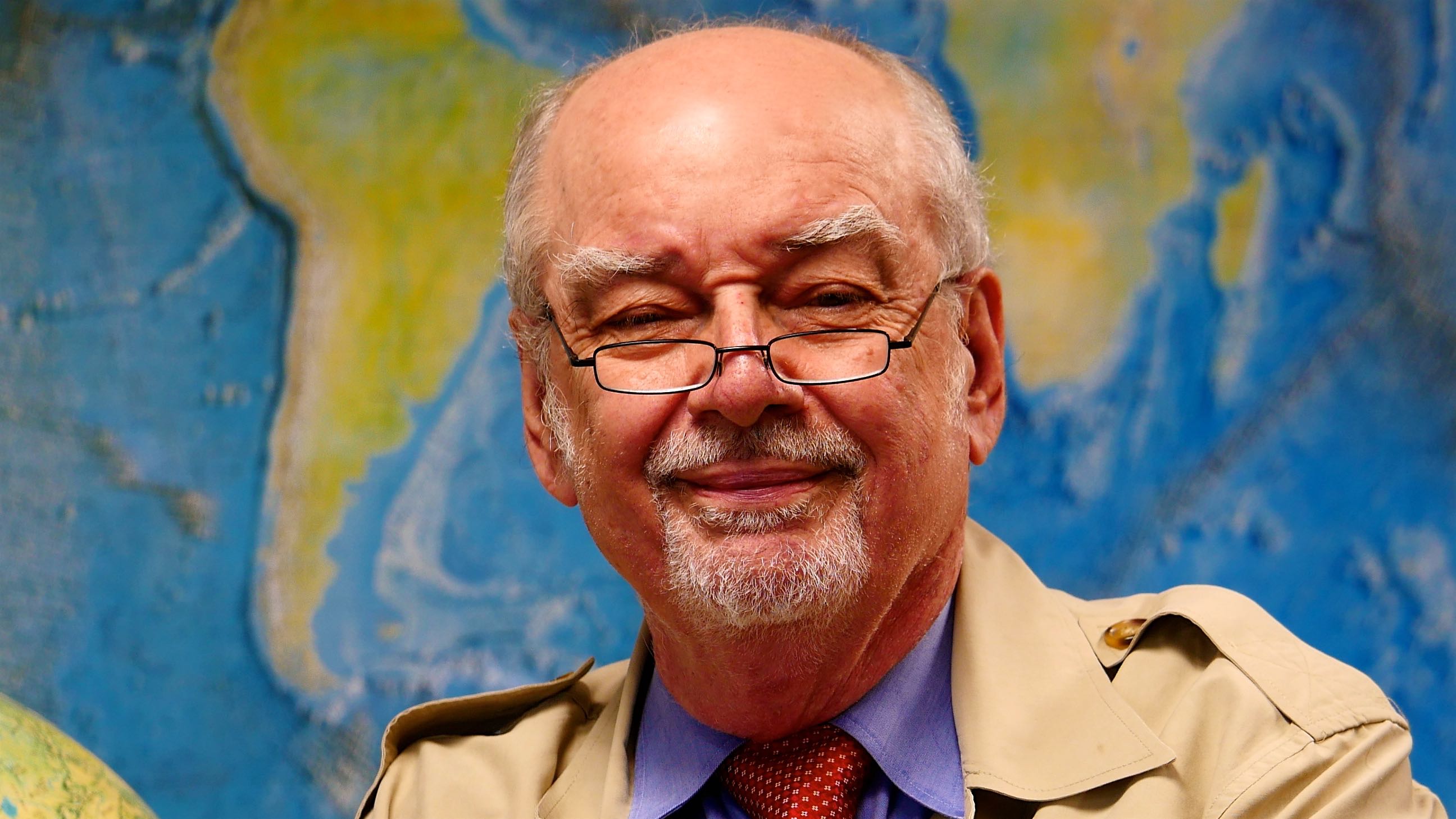Distinguished Career Award
Dr. Joe Prospero earned his B.S. in chemistry at Ursinus College in Collegeville, Pennsylvania in 1956. From there he went on to Princeton University for graduate school, studying radiochemistry and nuclear spectroscopy, receiving his M.A. in 1959 and his Ph.D. in 1963.
Prospero began his career at the University of Miami Rosenstiel School in 1963, and he has been studying dust everywhere. This has included making dust collections worldwide across the land and the sea by setting up networks of dust traps as well as making collections on board ships throughout the world’s oceans. His research has been published in more than 170 papers and they are highly cited, showing the importance of dust in an astonishing diversity of the Earth’s natural systems, as well as its importance to human society. Among his accomplishments are the following:
Identification of long-range-transported dust from Africa to the western Atlantic:
Although Joe was not the first to discover African dust reaching the island of Barbados, he was the first to flesh out the details of how much dust arrived there, its particle size distribution, its transport time, and its transport pathway. He was the first to document synoptic-scale views of dust transport across the Atlantic from Africa using satellite imagery and also traced a major dust storm across the Atlantic in an aircraft. He coined the term “Saharan Air Layer” or SAL, with the first recognition of the true dimensions of this seasonal, dust-laden air mass. This term has become standard among researchers in the atmospheric sciences, biogeochemistry, and geosciences.
Linkage of magnitude of dust flux in the western Atlantic Ocean with climatic conditions in source regions of Africa:
On the island of Barbados, Joe has maintained the longest-running, continuous dust trap system in the world (from 1965 to present), capturing decades of highly variable, long-range-transported dust from Africa. This long-term record enabled him to demonstrate that the magnitude of dust flux to the western Atlantic Ocean is a function of climatic conditions in the source regions: when the Sahel region of Africa experiences drought, dust flux increases. Following on the success of the Barbados dust-trapping program, Joe set up what is now the second-longest-running dust trap system in Miami, Florida. He was able to show that dust flux variations over time in Florida are correlated with those on Barbados, indicating common sources in Africa. Joe added other stations to the network as well, documenting not only that African dust goes north to Miami, but also south to South America and north to Bermuda.
Recognition of the effects of long-range-transported dust on air quality and human health, ecosystems, and soils:
Over the course of the following years, Joe set up networks of dust traps, many of them automated, literally around the world, as well as making dust collections onboard ships throughout the world’s oceans. These efforts demonstrated the importance of long-range dust transport from Asia and Australia to the Pacific, from Australia and the Middle East to the Indian Ocean, and of course from Africa to the Atlantic and Mediterranean. With this expanded dust collection network, long-term dust records, and dust collections available to him, Joe was later able to document that dust poses a significant hazard to human health, with its large component of fine-grained particulate matter, especially in the southeastern U.S. and on Caribbean islands. Further, he demonstrated that dust is an important carrier of viable fungi and bacteria, with potential impacts on ecosystems as well as human beings. With his collaborators, Joe also determined that long-range-transported dust is an important component of soils on islands and continental coastlines.
Development of remote sensing methods for dust and recognition that long-range-transported dust is a global phenomenon:
With expansion of his dust-trapping network around the globe, as well as development of remote sensing methods (particularly using Nimbus 7 Total Ozone Mapping Spectrometer [TOMS] imagery), Joe has been able to identify the most important dust source areas, on a planetaryscale, with a study published in Reviews of Geophysics that has been cited more than 1200 times. Further, Joe has been able to characterize the nutrient contributions of dust to the world’s oceans, starting with a study in the eastern Pacific (very early in his career), right up to recent studies demonstrating the importance of iron fertilization from dust inputs to the North Atlantic.
Despite the fact that he has been retired for a number of years, he continues to work and publish regularly. He is not only an extremely successful scientist, but also an active part of the Aeolian scientific community. He is noted as being a consistent promoter of scientific collaboration and progress in established areas of research and in developing nations, along with the translation of research for the public good. To many he is seen as an outstanding mentor, and he continues to guide students.

